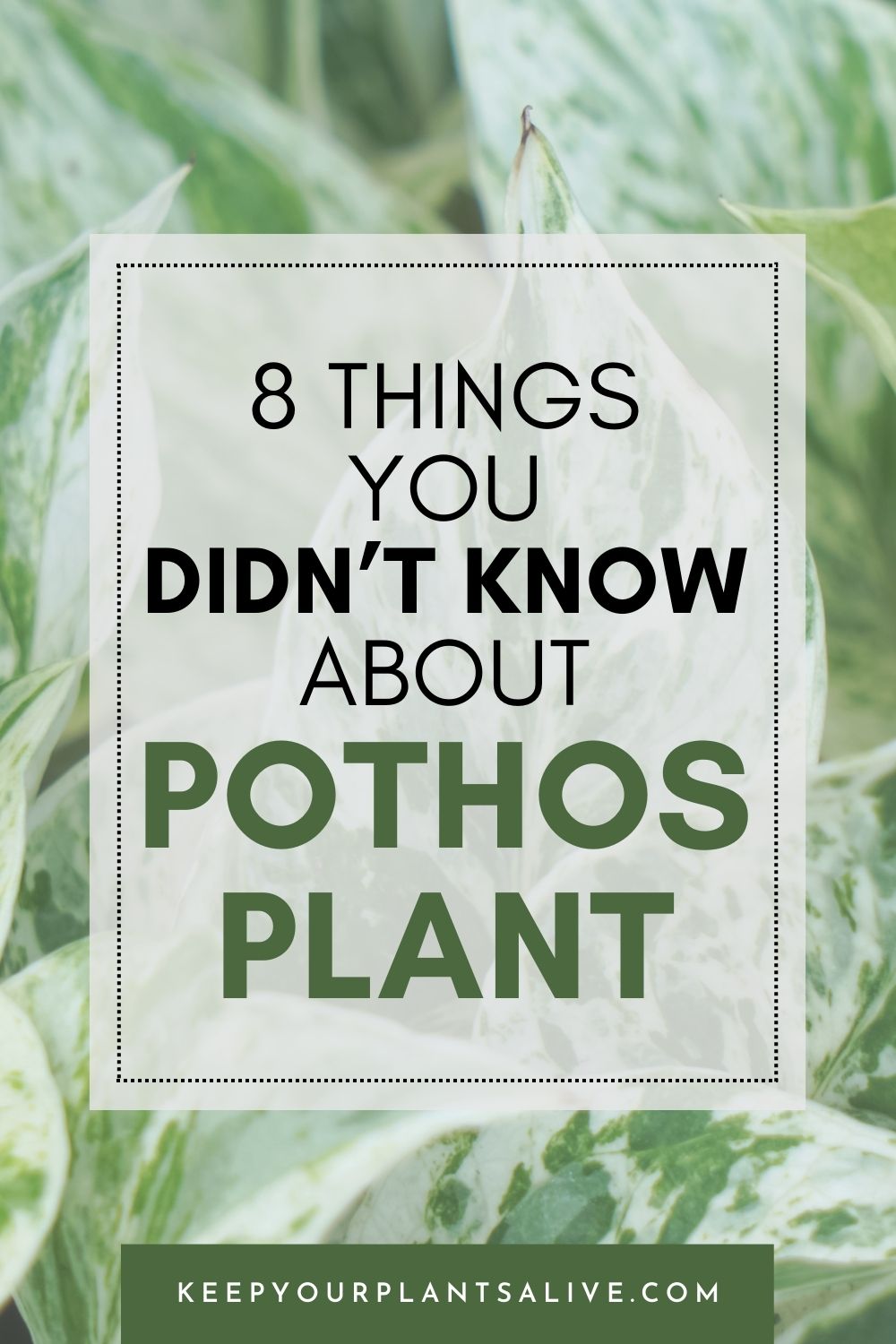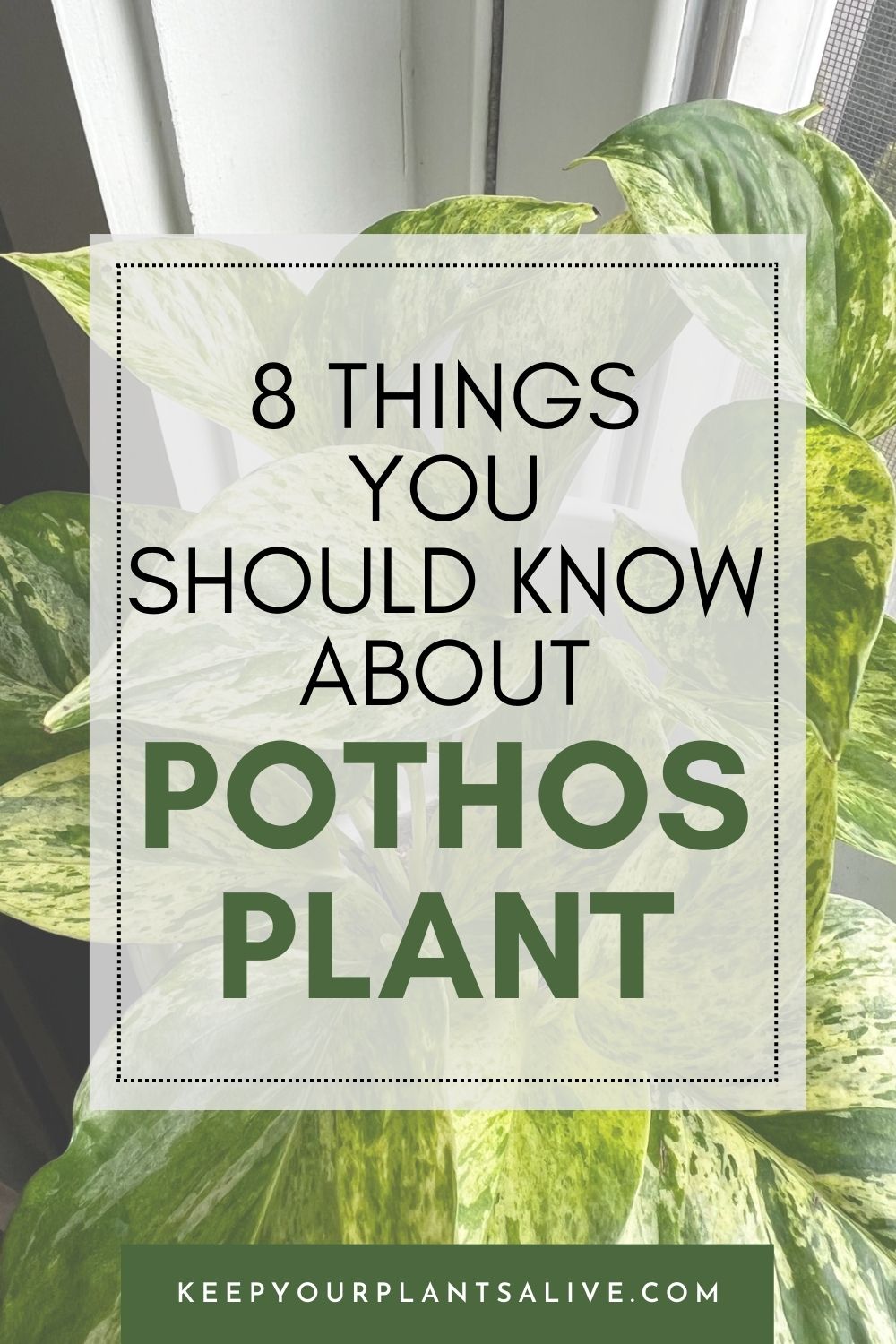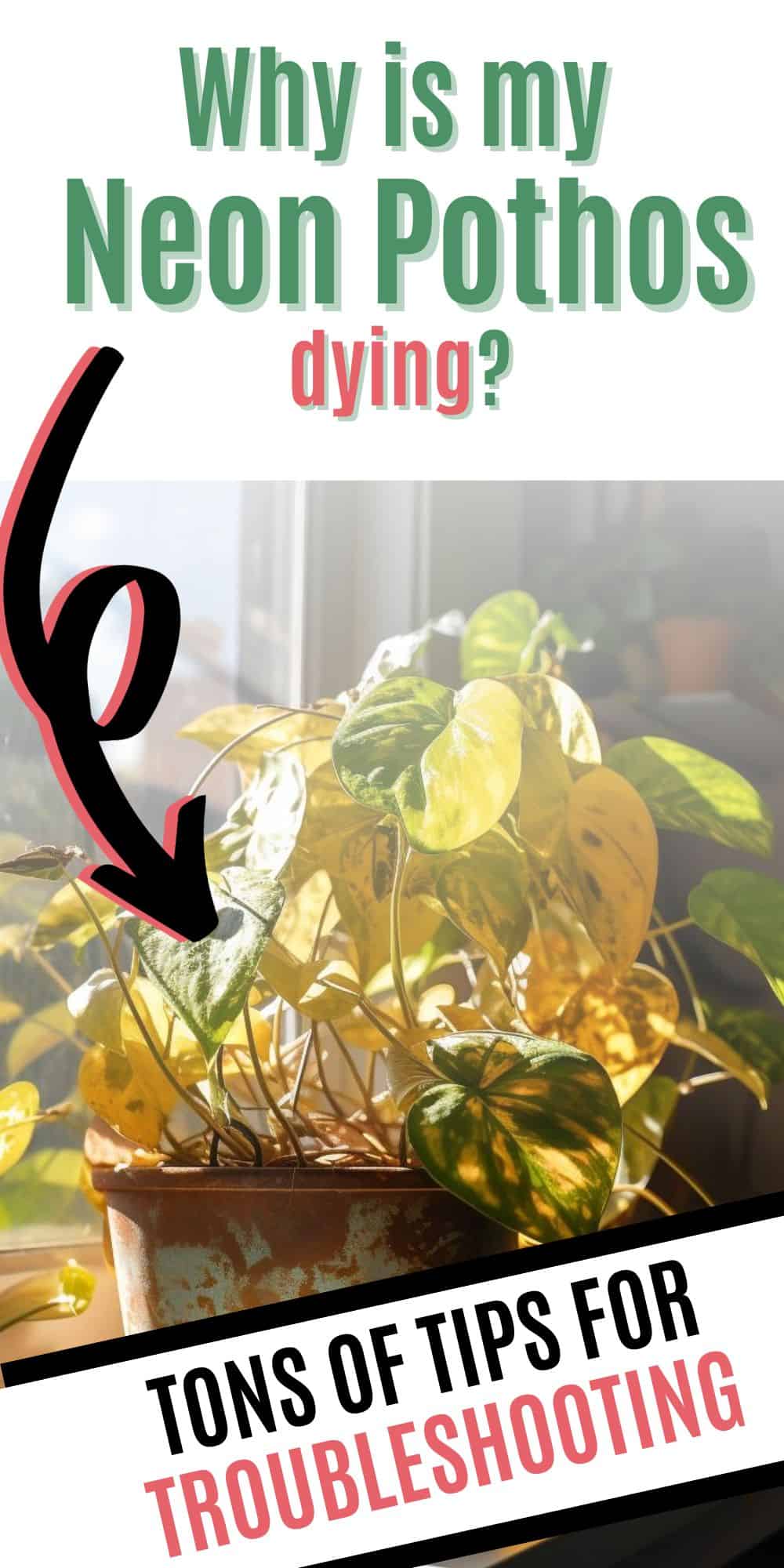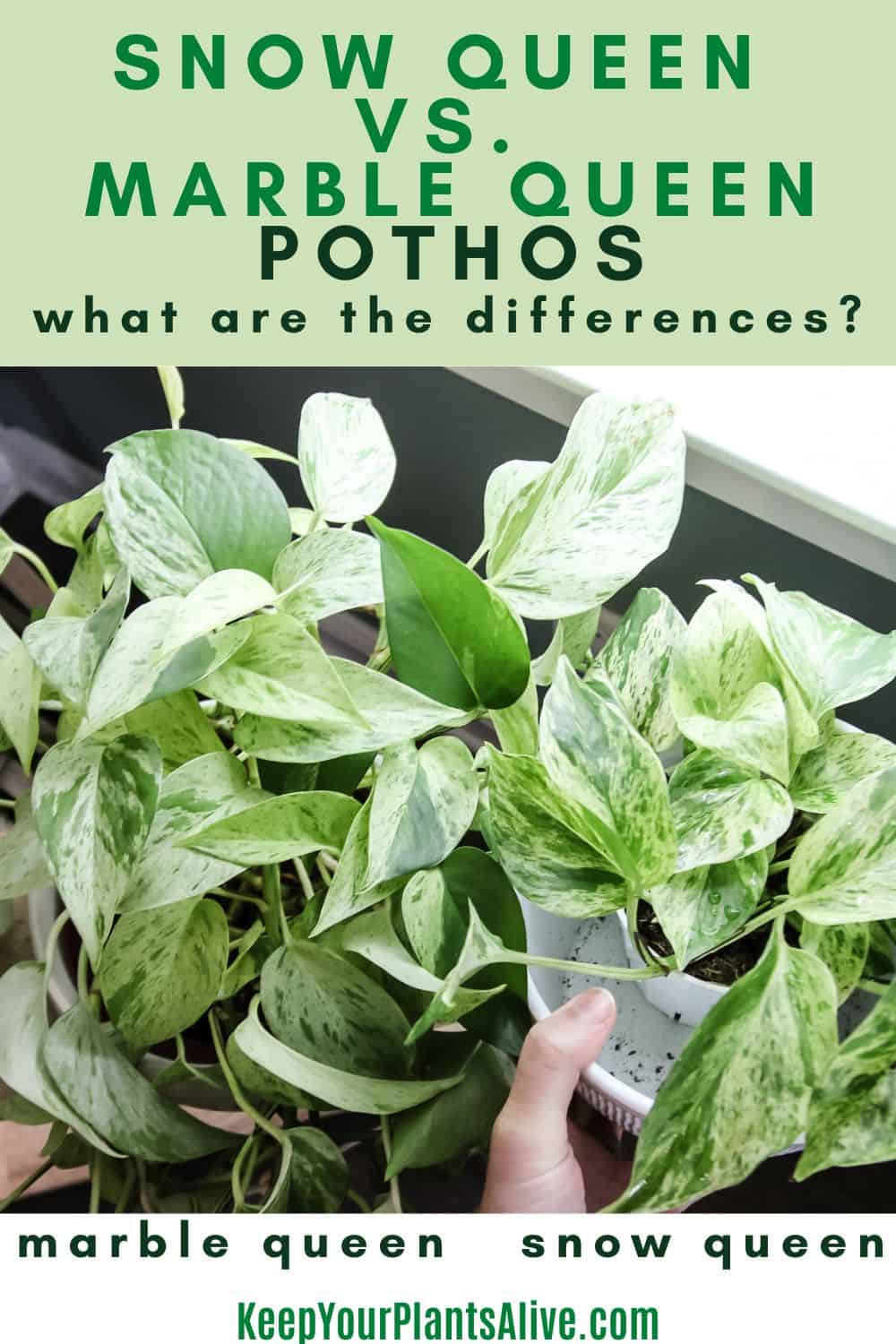Love the look of a multi-colored houseplant? Here's how to care for variegated pothos and special considerations needed to maintain pothos variegation!
I love pothos plants and enjoy collecting varieties of it. One of the things that sets some of the varieties apart is the coloring of the leaves.
Vareigation is the appearance of different colored sections on the leaves, stems, or even fruits of plants.
Pothos variegation is usually on the leaves and can be white, yellow, or different shades of green.
If variegated plants do not get th eright conditions (namely, enough light), the leaves can revert back to solid green and lose their colorful patterns.
So, it is important to give your variegated plants proper care!
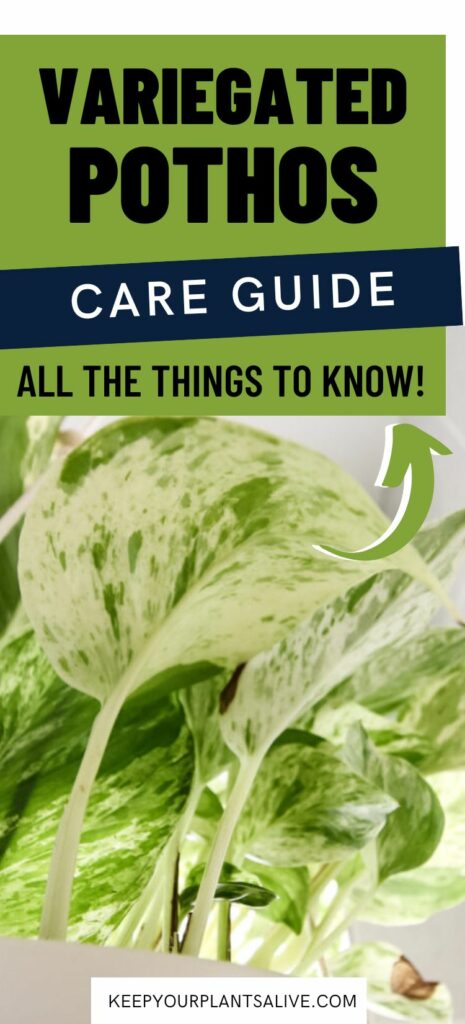
How to care for variegated pothos
Variegated pothos is a popular houseplant that is known for its attractive foliage and ease of care. It is a member of the Epipremnum genus and is also commonly known as Devil's Ivy.
This plant features heart-shaped leaves variegated with green and white, making it an eye-catching addition to any room.
Varieties of pothos that often have variegation include:
- marble queen pothos
- golden pothos
- neon pothos
- pearls and jade
- harlequin
Caring for a variegated pothos is relatively simple and requires minimal effort. This plant is forgiving and can thrive in a variety of environments.
It is an excellent choice for those who are new to houseplant care or who want to add some greenery to their home without much fuss.
In this article, we will cover the basics of caring for variegated pothos, including watering, light, temperature, and humidity requirements.
Other pothos content you might enjoy:
- Golden pothos care guide
- Cebu Blue pothos care guide
- Baltic Blue pothos care guide
- Marble Queen pothos care guide
- Global Green pothos care guide
- Neon pothos care guide
- NJoy Pothos Care Guide
- Why are my pothos leaves turning yellow?
- Why are my pothos leaves turning brown?
- Why is my pothos plant not growing leaves?
- Why are my pothos cuttings rotting
- How to move pothos from water to soil
- Should I mist my pothos?
- How to make pothos fuller
- Can you propagate pothos without a leaf?
- Can you propagate pothos from a leaf?
- Can you propagate a long pothos vine?
- Where to cut pothos for propagation
- Pothos vs Snake plants: which is better for beginners?
- Cebu Blue Pothos vs Baltic Blue Pothos
- How to propagate pothos
- How to propagate golden pothos
- How to propagate a satin pothos
- How to propagate pothos in soil
- How often to water pothos plants
- How to care for variegated pothos
- How to revive a dying pothos plant
- Why are my Pothos leaves curling?
- How to identify and treat common pothos pests
- How to divide pothos plant
- How to make pothos grow bigger leaves
- Why does my pothos only have one vine?
- Can you grow pothos in low light conditions?
- How to cut off dead pothos leaves
- Are pothos plants toxic to cats and dogs?
- Can you grow pothos in water?
- Why is my pothos droopy?
- Why is my pothos plant dropping leaves?
Printable Pothos Plant Care Guide
Join the (free!) KeepYourPlantsAlive+ community to access this exclusive printable plant care guide! Or keep scrolling for more!
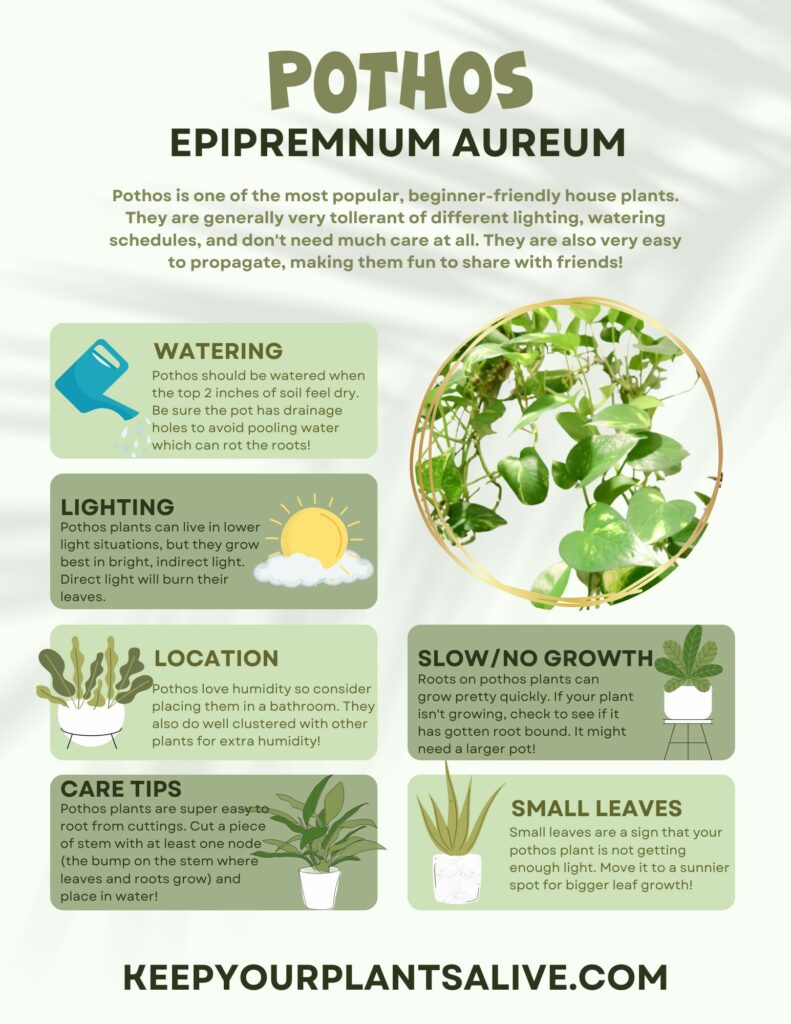
Special care tips for your variegated pothos
Pothos in general are easy care plants, though variegated varieties do have a few special considerations in order to maintain the leaf variegation.
Light
This plant prefers bright, indirect light. They can tolerate low light conditions, but their growth will be slower, and their leaves may become less variegated.
If you place your plant in direct sunlight, the leaves may scorch or become discolored. It's best to place your plant near a north or east-facing window or provide it with artificial light.
Watering
Pothos plants prefer slightly moist soil but can be susceptible to overwatering. Allow the top inch of soil to dry out before watering, and never let your plant sit in standing water.
If you notice the leaves turning yellow or the soil is consistently damp, you may be overwatering your plant.
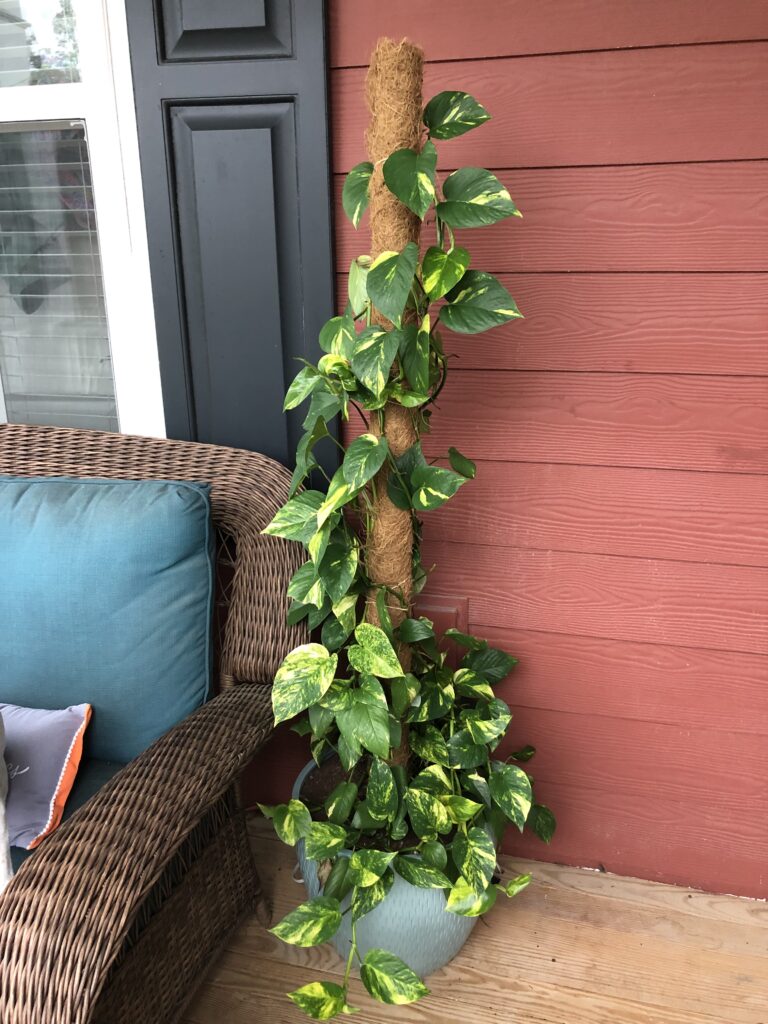
Humidity
Variegated pothos plants prefer moderate to high humidity levels. Dry air can cause the leaves to become crispy or brown around the edges.
You can fix this by increasing the humidity around your plant by misting it with water, placing a tray of water near the plant, or using a humidifier.
Fertilizer
Pothos benefits from regular fertilization! During the growth season(spring and summer), apply a balanced, water-soluble fertilizer once a month.
Follow the instructions on the label, and avoid over-fertilizing, which can cause root burn and damage to the plant.
During the winter, however, fertilization should be reduced to a minimum, if not at all.
Pruning
Variegated pothos plants are fast-growing and can become leggy over time. Pruning the plant regularly contributes to keeping it appearing full and bushy.
Use clean, sharp scissors or pruning shears to snip off any dead, yellowing, or damaged leaves, and cut back any long, bare stems to promote new growth. Be careful not to cut out the main stem!
Soil
This kind of pothos plant can grow in a variety of soil types, but they prefer a well-draining mix that retains moisture.
You can use a commercial potting mix or make your own by mixing equal parts peat moss, perlite, and vermiculite.
Propagation
Another plus is they are easy to propagate from stem cuttings.
Simply snip off a 4-6 inch stem with several leaves and place it in a jar of water or in moist soil. You can cover loosely with a plastic bag to create a greenhouse effect.
Keep the cutting in a warm, bright location, and within a few weeks, it should start to root and produce new growth.
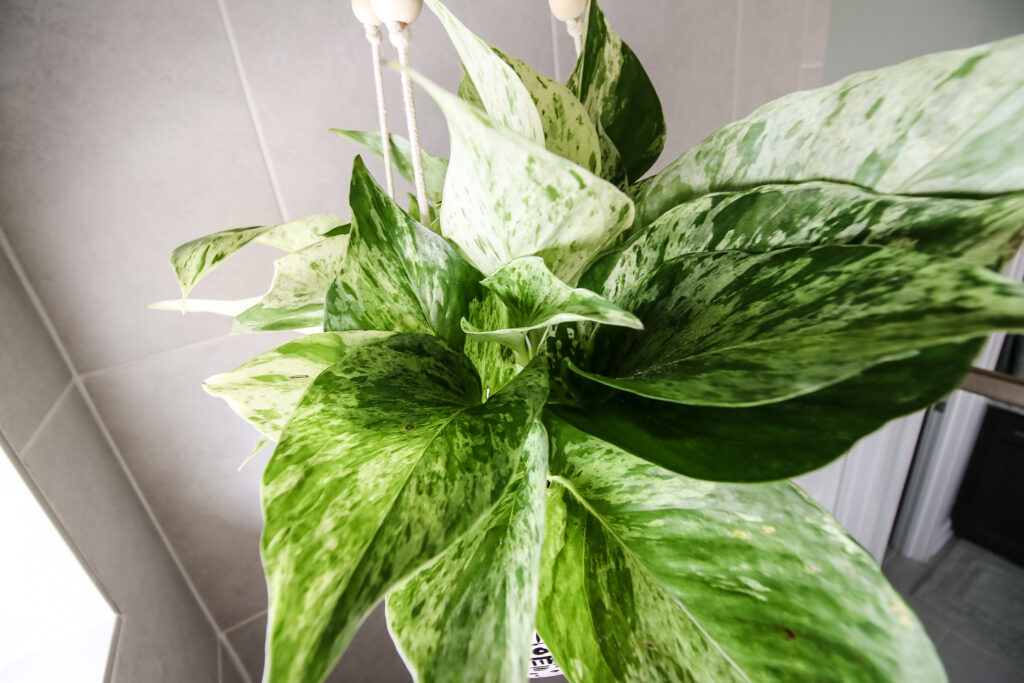
How do you increase variegation in pothos plants?
Variegation is caused by a genetic mutation that causes the plant to produce different colored pigments in its leaves.
There are several things you can do to promote and enhance the variegation of your pothos plant:
- provide bright indirect light
- maintain consistent temperatures
- fertilize regularly
- prune your plant
- propagate your plant
Provide Bright, Indirect Light
Variegated pothos plants need bright, indirect light to maintain and increase their variegation. On the other hand, Direct sunlight can burn the leaves and cause them to lose variegation.
Place your pothos plant near a window with filtered light or provide artificial light, such as a grow light.
Maintain Consistent Temperature
Pothos plants prefer temperatures between 60-85°F (15-29°C). Extreme temperature fluctuations can stress the plant and cause it to lose variegation.
You should avoid placing your plant near cold drafts as well as under air conditioning vents.
Fertilize Regularly
Fertilization can help promote variegation in pothos plants. You should use a balanced, water-soluble fertilizer.
It is best to use it once a month during the growing season, which is spring and summer. Follow the instructions on the label and avoid over-fertilizing, which can damage the plant.
Prune Your Plant
Regular pruning can help keep your pothos plant looking full and bushy. Pruning also helps to prevent the plant from becoming leggy and encourages the growth of new leaves.
Also, if you want to encourage new growth and boost variation, be sure to prune back any long, barren stems.
Propagate Your Plant
Propagating your pothos plant can help increase variegation. When you take cuttings from a variegated pothos plant, the new plants may have more variegation than the parent plant.
Propagate your pothos by rooting stem cuttings in water or soil.
Remember, increasing variegation in pothos plants takes time and patience. Be consistent with your care routine and provide the plant with the right growing conditions.
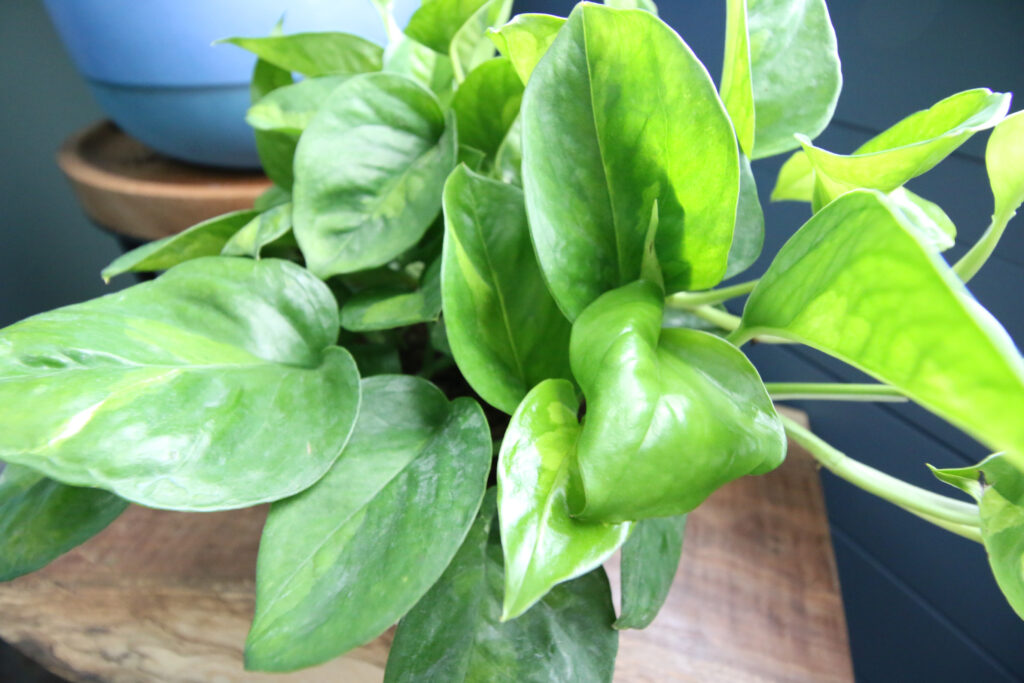
What if my plant starts to lose variegation?
If your pothos plant starts to lose variegation, it may be a sign of stress or an underlying problem.
Here are some common reasons why a pothos plant may lose variegation:
- lack of light
- over fertilization
- root bound
- pest infestation
Lack of light
As mentioned earlier, lack of light can cause a pothos plant to lose variegation. Put your plant somewhere brighter or give it artificial light.
Over-fertilization
Over-fertilizing can cause a pothos plant to lose variegation and may even damage the plant. There are always instructions on the label, and you only need to follow them carefully!
Root bound
If your pothos plant is root-bound, it may become stressed and lose variegation. Get a larger container, put fresh soil, repot your gorgeous plant and watch it sparkle!
Pest infestation
Pests such as spider mites or mealybugs can damage the leaves of a pothos plant, causing them to lose variegation. Treat any pest infestations promptly to prevent further damage.
In conclusion, increasing variegation in pothos plants requires proper care and attention to their lighting, temperature, and fertilization needs.
If your plant starts to lose variegation, it may be a sign of stress or an underlying problem that requires attention.
By addressing these issues promptly and checking our free PDF pothos care guide, you can help your variegated pothos plant regain its variegation and thrive.

Thanks for reading!


Hey there, I'm Morgan, a houseplant enthusiast from sunny Charleston, South Carolina. Growing up surrounded by my mom's lush orchids and African violets, I discovered the magic of bringing nature indoors. Thanks to the pandemic, I delved deeper into houseplants, discovering their power to uplift moods and transform spaces. I'm here to spill all my secrets, helping you pick the perfect houseplant - and make it happy. Let's keep your plants alive, together! 😊

